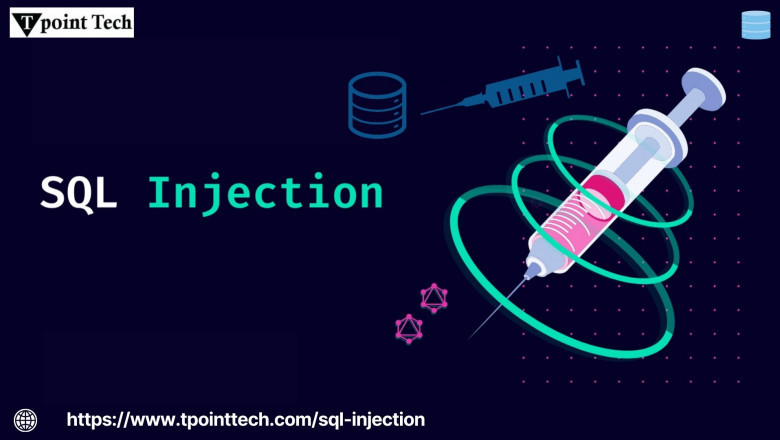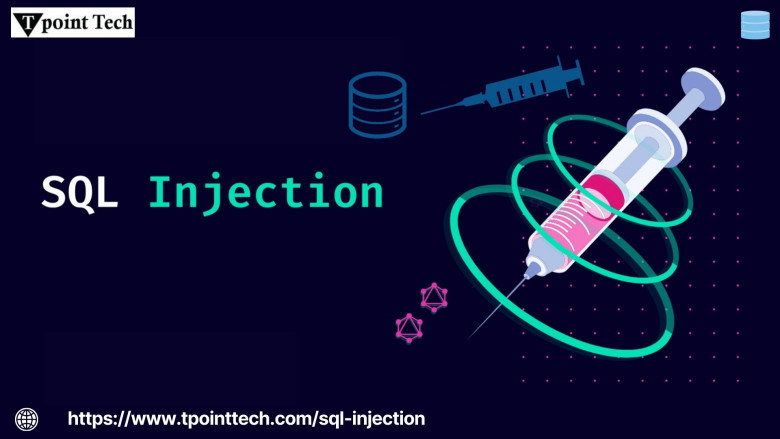views
SQL Injection
Introduction
In an era of rapidly evolving web technologies, cybersecurity remains a major concern for developers, businesses, and users alike. Among the countless vulnerabilities that threaten web applications, SQL injection continues to stand out as one of the most persistent and dangerous. Despite being a well-documented issue with known solutions, it still plagues modern applications and causes massive data breaches every year.
But why is SQL injection still such a threat, even in 2025? Let’s dive into what makes this vulnerability so powerful, how it works, and why even experienced developers sometimes fall into its trap.
What is SQL Injection?
SQL injection is a type of attack in which malicious SQL code is inserted into an input field or API call to manipulate the backend database. If the application doesn’t properly validate or sanitize user input, the attacker can alter the intended SQL query and gain unauthorized access to data.
For example, instead of entering a typical username like john_doe, an attacker might input something like:
' OR 1=1 --
When this string is inserted directly into an SQL query without validation, it could result in a query like:
SELECT * FROM users WHERE username = '' OR 1=1 --';
This tells the database to return all users, effectively bypassing login controls. In more severe cases, attackers can extract data, delete tables, or even gain administrative access.
Why SQL Injection Is Still Relevant
1. Simple to Execute, Devastating in Impact
One of the reasons SQL injection is so dangerous is how easy it is to exploit. All it takes is a vulnerable input field—like a login box, search bar, or form—and an attacker can begin probing for weaknesses. Even novice hackers with limited knowledge can use automated tools to scan and exploit sites vulnerable to SQL injection.
Yet, the consequences can be catastrophic. Successful attacks may expose usernames, passwords, credit card numbers, and other sensitive data. In worst-case scenarios, attackers can gain total control of the database server.
2. Many Applications Still Lack Proper Input Validation
Despite years of awareness, many developers still neglect proper input validation and query handling. This often happens due to rushed development cycles, lack of security training, or legacy systems that haven’t been updated. Especially in older codebases or in startups without dedicated security teams, vulnerable SQL queries may go unnoticed for years.
3. False Sense of Security
Some developers believe that using frameworks or ORM (Object-Relational Mapping) libraries completely protects them from SQL injection. While these tools reduce the risk, they are not foolproof. If a developer manually writes raw SQL queries or disables certain safety features, vulnerabilities can creep back in.
Even when a SQL formatter is used to clean up and standardize SQL code, it does not sanitize user input or enforce security rules. A SQL formatter improves code readability—but not security. This distinction is crucial: clear code is easier to maintain, but it still needs robust protections against malicious inputs.
High-Profile SQL Injection Attacks
Several major breaches in the last decade were caused by SQL injection vulnerabilities:
-
Sony Pictures (2011): Hackers used SQL injection to access sensitive employee data and unreleased films.
-
Heartland Payment Systems: A massive data breach exposing 100+ million credit card numbers began with an SQL injection attack.
-
TalkTalk (2015): A UK telecom provider lost data from 150,000 customers due to a simple SQL injection flaw in a website form.
These cases show that even large companies with IT budgets can overlook basic security practices.
How to Prevent SQL Injection
Preventing SQL injection is not difficult—but it requires discipline and consistency:
-
Use Parameterized Queries or Prepared Statements: This is the gold standard. Avoid constructing SQL queries using string concatenation.
-
Sanitize and Validate All User Inputs: Ensure that input meets strict criteria and does not include potentially dangerous characters.
-
Use ORM Tools Carefully: Let the framework handle query building, and avoid raw SQL when possible.
-
Apply the Principle of Least Privilege: The database user used by the application should have the minimum necessary permissions.
-
Perform Regular Security Testing: Use tools to scan your codebase for SQL injection vulnerabilities. Manual penetration testing is also highly effective.
-
Use SQL Formatter Tools: While a SQL formatter won’t prevent injection directly, it helps developers write cleaner, more understandable code—making it easier to spot potential vulnerabilities.
Conclusion
SQL injection remains one of the most dangerous and commonly exploited vulnerabilities in web applications today. Its ease of execution, combined with the severe consequences of a successful attack, make it a top concern for every web developer and cybersecurity professional.
While modern tools like SQL formatters, ORMs, and frameworks help developers write cleaner and more organized SQL code, they are not substitutes for secure coding practices. Proper input validation, query parameterization, and regular security audits are still the best defenses against SQL injection.
As long as databases are powering our applications, SQL injection will remain a threat—unless we treat security as a priority from day one.















Comments
0 comment